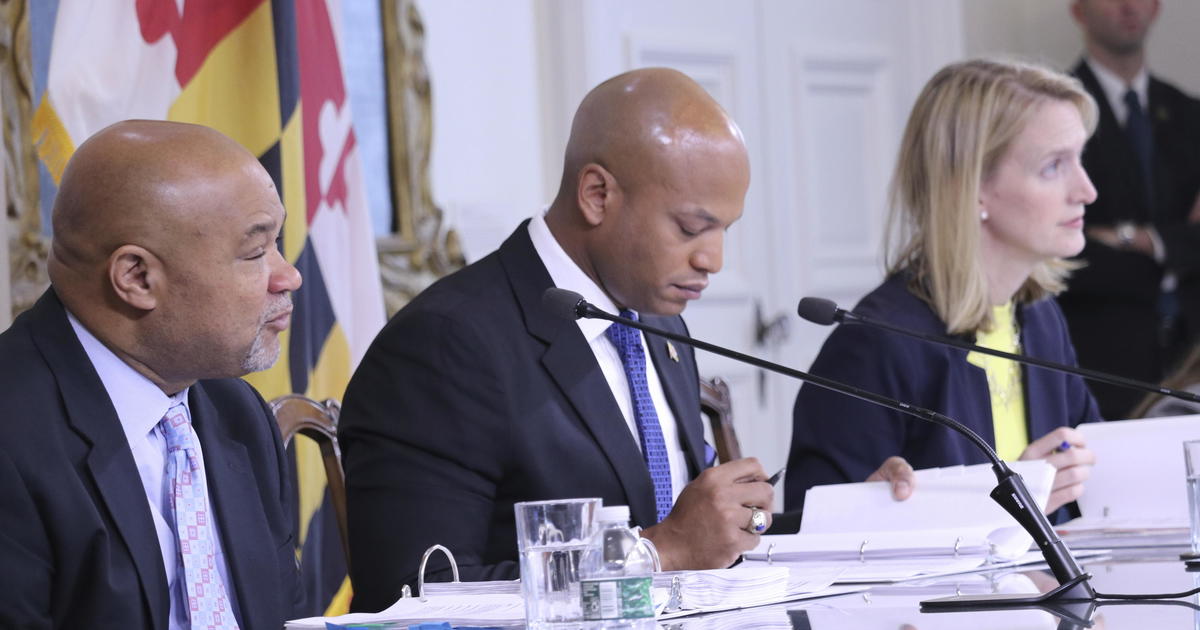Gehry Offers Changes In Eisenhower Memorial Design
WASHINGTON (AP) -- Architect Frank Gehry and his design team proposed changes Tuesday to the Dwight D. Eisenhower Memorial planned for a site near the National Mall after hearing complaints from Ike's family for months.
The family had said the design focuses too much on Eisenhower's humble Kansas roots, rather than his accomplishments.
Members of the Eisenhower Memorial Commission held a public meeting to review changes and said they were nearing a resolution to seek final approval of Gehry's concept.
Gehry has proposed a memorial park that would be framed with large metal tapestries showing a Kansas landscape to evoke Eisenhower's boyhood home in Abilene, Kan. At the center of the park, Gehry is replacing large images in stone reliefs with statues standing about 9 feet tall, showing Ike as a World War II hero and as president.
In a letter to the commission Tuesday, Gehry explained the changes. He couldn't attend because his firm designed the set for the Los Angeles Philharmonic's production of "Don Giovanni," opening Friday.
"How do you represent a man of such towering achievement whose modesty was one of his core values?" Gehry wrote. "I have refined the design to incorporate this feedback, which I believe helps tell the story of Eisenhower with more dignity and more power."
The statues would depict Gen. Eisenhower with the 101st Airborne Division of soldiers before the D-Day invasion of Normandy, France, in World War II.
Eisenhower as president would be depicted with his hand on a globe, inspired by a Yousuf Karsh photograph titled "The Elder Statesman."
"After careful consideration, I believe that the sculptures bring the story to life in a more powerful and accessible way than the bas reliefs were able to do," Gehry wrote, reversing his early rejection of statues.
Commission chairman Rocco Siciliano, who served in Eisenhower's White House, told the commissioners that Gehry's shift to statues represented a "very big, powerful change."
Susan Eisenhower, the 34th president's granddaughter, said her family had seen Gehry's updated design and had time to ask questions, but she declined comment Tuesday. She said she would be consulting with her family.
Quotations from Eisenhower would serve as a backdrop for the statues, along with language spelling out his accomplishments as a war general and as a president who led eight years of peace and prosperity. The exact wording will be approved later, according to members of the commission.
A life-size sculpture of a young Eisenhower would remain at the center of the memorial, looking out at his future accomplishments, despite the family's earlier objections. Gehry said it will be an inspiration for the thousands of children who will visit the site.
To develop final images for the tapestries, designers with Gehry's firm said they had been photographing Kansas landscapes.
"Eisenhower was so proud to grow up in Kansas -- leaving out this imagery would mean omitting an important part of his story," Gehry wrote.
At a congressional hearing in March, one of Eisenhower's granddaughters compared the metal tapestries to the fences of a concentration camp in the Holocaust.
Later, Gehry revealed he had family members who died in the Holocaust. The tapestries are one part of the design he seems determined to protect.
The memorial commission was to vote at a later date. All the members who were present, though, voiced approval.
The 12-year-old memorial effort will rely on private fundraising and money from Congress. Organizers hope to complete it by 2015 at a cost of about $142 million since the effort began.
Kansas Sen. Pat Roberts, who has served on the commission for years, said he and others have tried to resolve differences over the design and are "very close" to moving forward.
"From the beginning, I have supported this design because it brings Kansas to the National Mall," Roberts said. "By Ike's own words before over 200,000 people when he came back after the war ... `The proudest thing I can claim is that I am from Abilene."'
Milton Grenfell, an architect and board member of a group called the National Civic Art Society that promotes traditional architecture, said none of Gehry's changes satisfied critics. Having 9-foot-tall statues with nothing to frame them will look like "zombies," and the tapestries are a "tangled mess of steel" that won't last forever, he said.
"Our big problem with it is it does not strive for beauty," Grenfell said.
Louis Galambos, a Johns Hopkins University historian who edited and published Eisenhower's papers over 25 years, said every memorial provokes debate. Still, he said Gehry's design captures the heartland, Eisenhower the man and a sense of his values.
"That's what Gehry's accomplishment is," he said. "He has jumped ahead of the other memorials or away from them. He has broken new ground with this."
(Copyright 2012 by The Associated Press. All Rights Reserved.)



